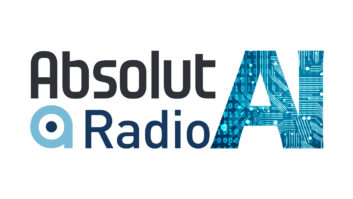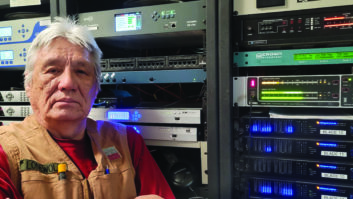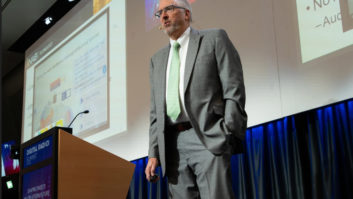How is HD Radio really doing?
Aug 1, 2008 12:00 PM
It’s about that time when I take a survey of HD Radio’s progress. We regularly see reports of statistics and projections relating to the technology, and local newspapers have some occasional coverage of it. Last month, Ibiquity President and CEO Bob Struble launched an online column to provide what he calls a candid inside view of what Ibiquity is thinking and doing to speed AM and FM’s conversion to digital.

We can all see that HD Radio appears to be moving slowly ahead. Recent news headlines of sub $100 receivers and the first portable (albeit far from being as portable as an Ipod) receiver are good steps to making HD Radio accessible. Since I follow the progress closely, I looked forward to seeing something new in Struble’s column for me to consider in the HD Radio rollout. Most of the information was an overview on what we already know.
As I expected him to say, he feels the HD Radio rollout is going well. He actually said that it was fantastic. He noted that almost 1,800 stations are transmitting an HD Radio signal, which reaches more than 80 percent of the population. He also stated that 50 percent of radio listening takes place on stations that have converted to digital.
1,800 stations is not quite 15 percent of all the stations in the U.S. And the �50 percent of all radio listening takes place on stations that have converted� doesn’t mean all those listeners are listening to an HD Radio signal. Most of my radio listening is done in the car, but I still have an analog car radio like most people.
Struble touts that there are more multicast stations on the air, and Itunes tagging and traffic distribution provide new revenue streams. This is all good for HD Radio. There’s no question that there is progress: A little here, a little there.
But the real indicator of HD Radio’s acceptance is the view of the typical consumer. Regular people (those who are not in broadcasting) do seem to be more familiar with the term HD Radio than before, but they still don’t fully understand what it is or what it means.
I’m glad to see prices for HD Radio receivers drop below $100. But Struble noted something that I continue to experience when I visit a consumer electronics store. He writes that the inexpensive receivers are available at more than 12,000 storefronts nationally, but you may have to ask a few times.
If consumers have to ask for it, they’re probably not going to make the effort. I’ve said it before: HD Radio shouldn’t be an option, it should be the norm.
Struble has a grasp of the reality, though. He says that we are still a long way from being done with this long-term project. Stations must continue to convert their transmitters and provide multicast services. Consumers need hundreds of receivers with HD Radio, not just dozens (that’s making it the norm and not an option). Sales floor knowledge, merchandising and product demonstration needs to improve. He also wants HD Radio in every car.
Those are good goals, and I anticipate seeing how they will be accomplished. They’re not new goals. It has taken some time to get to this point, so I look forward to his future columns and the efforts of stations and the HD Digital Radio Alliance in making them a reality. Keep working and keep pushing, Bob.
What’s your opinion? Send it to[email protected]












